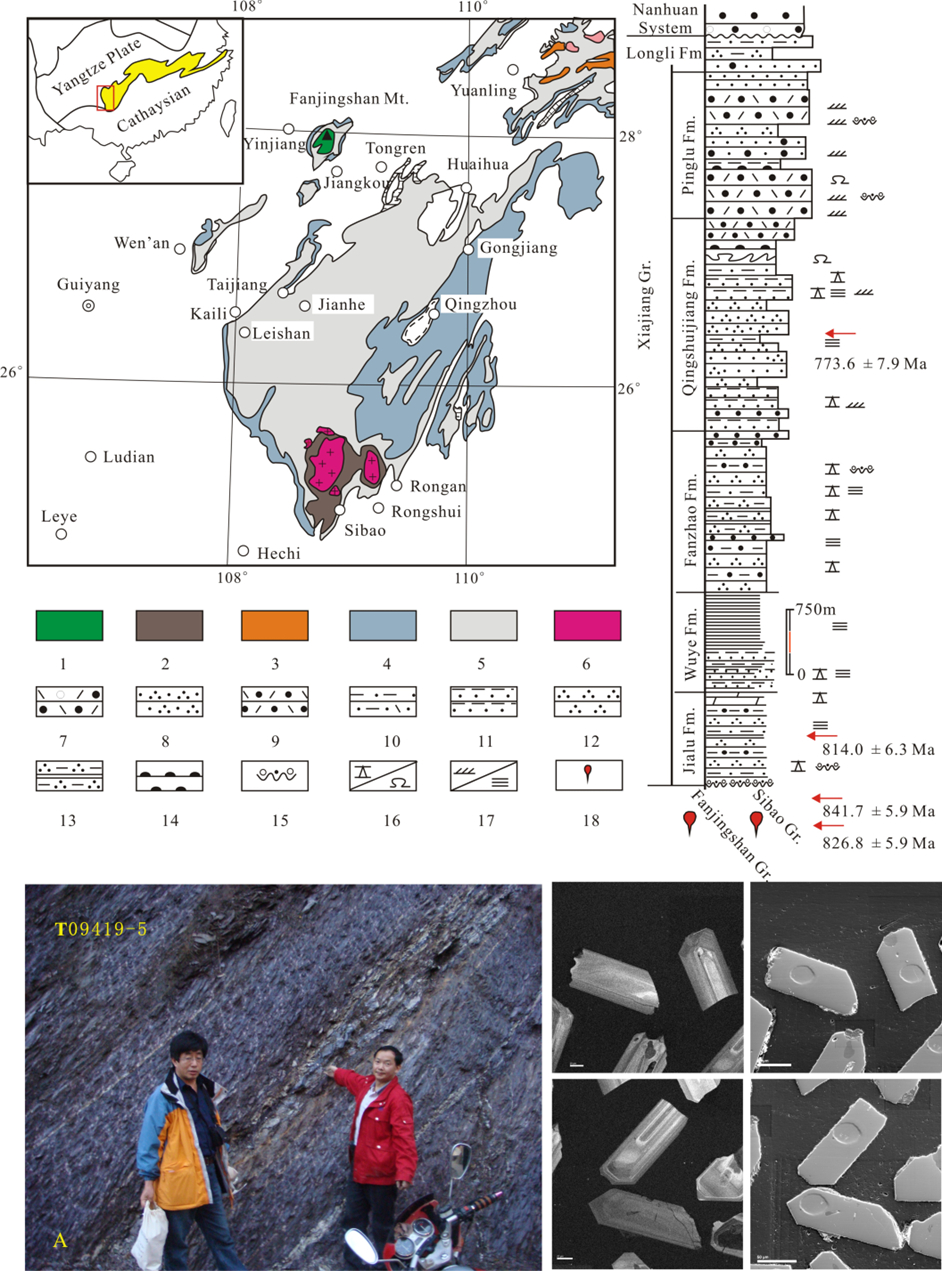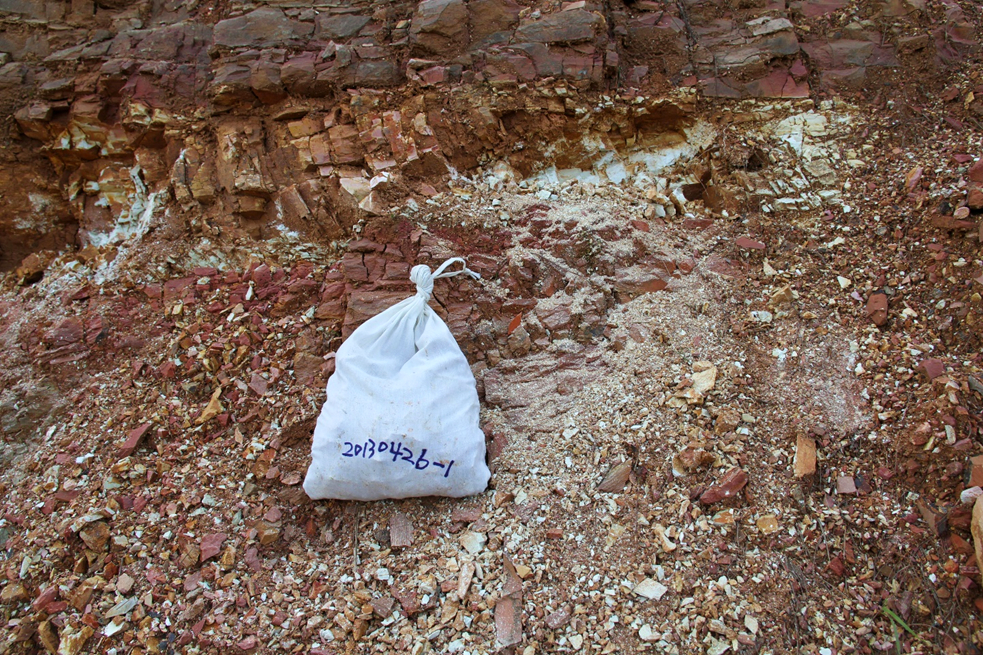Fanzhao Fm
Type Locality and Naming
East Guizhou. The Fanzhao Fm of the Xiajiang Gr was named by the No. 108 Team of Guizhou Bureau of Geology in 1962 and was formally published on the Guidebook of 1: 200 000 Scale Geological Map of Jianhe Sheet in 1965. The typical section is located in the Fanzhao village, Taijiang County, Guizhou Province. Lower-middle formation of the Xiajiang Gr.
Synonym: (番昭组)
Lithology and Thickness
The Fanzhao Fm is subdivided into two members. Lower member is composed of light gray to dark gray blasto-sandstone, blasto-siltstone intercalated with slate, and occurrence of small marble lenses in the upper part. The sandstone and siltstone commonly contain clayish gravels and conglomerate lenses. Upper member is light gray to dark gray slate, phyllite intercalated with minor blasto-sandstone, pyrite-bearing blasto-tuff, occasionally with small marble lenses. The lower member is about 400 to 900 m and the upper member is about 400 to 1900 m thick.
[Figure: The Stratigraphic column of the Xiajiang Gr. in Guizhou Province. A-Volcanic ash beds in the Jialu Fm and zircons from the ash bed.]
[Figure: Sampling in the Fanzhao Formation of the Xiajiang Gr in Guizhou Province (photo by Chen Jianshu)]
Relationships and Distribution
Lower contact
It rests disconformably on the underlying Wuye Fm
Upper contact
It is conformably overlain by the Qingshuijiang Fm (upper-middle formation of Xiajiang Gr) in East Fanjing Mtn region); or unconformably by the Liangjiche Fm (in West Fanjing Mtn region of NE Guizhou corner with Hunan, where uppermost Xiajiang Gr is absent).
Regional extent
East Guizhou Province. However, the typical Fanzhao Fm is restricted to the Leigongshan area; and, from northwest to southeast, the sandstone is decreasing and thinning.
GeoJSON
Fossils
Age
Depositional setting
Additional Information
In the northwest Fanjing Mt. area, the sequence corresponding with the Fanzhao Fm was named as the Zhangjiaba Fm by the Guizhou Party of Regional Geological Survey in 1983 and it is narrowly distributed in a strip of NNE to SSW on the northwest slop of Fanjing Mt. The lower part is composed of light gray to grayish white blasto-clastic rock interbedded with light gray to grayish green slate. The upper part, light purple, medium-to coarse-grained arkosic sandstone interbedded with purple red blasto-siltstone, intercalated with grayish green blasto- sandstone and slate. Its thickness varies from 340 to 460 m. The nominator considered that the strato-horizon of the Fanzhao Formation is corresponding to the Zhangjiaba Fm, but the lithological features of the latter is quite different from the former, representing a different position of turbidity facies and a different name should be used. However, the lexicon compilers consider that the distribution of the “Zhangjiaba Fm” is too limited to deserve a separate name as it only represents the sediment of different facies tract in a same horizon and belong to a same sedimentary system.

